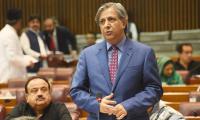If the findings of the German Watch Index are anything to go by, Pakistan has been ranked the seventh among 135 countries that are most affected by climate change. Between 1996 and 2015, the country suffered 133 different disasters owing to changes in climate patterns. Moreover, it has incurred economic damages worth around $27 billion between 2010 and 2016 owing to these natural disasters. As per a series of reports, the country requires Rs700 billion to Rs1,400 billion annually to deal with the impact of climate change, particularly in the spheres of agriculture, energy, transport, infrastructure, irrigation networks, health and education. It is, therefore, encouraging to note that the government has assigned a target of planting 100 million trees by 2021 under the Prime Minister’s Green Pakistan Programme. So far, more than two million trees have been planted in the country with the help of the provincial forest departments, according to the Capital Administration and Development Division (CADD).
Forests are a critical ingredient in mitigating the adverse impacts of climate change – especially when it comes to dealing with massive flooding. If deforestation continues, the situation will escalate and heatwaves, duststorms, urban flooding, land erosion and landslides will become the order of the day. As a result, there is a pressing need to invest in the forestry sector so as to achieve lucrative returns. Investments in this sector will not only ensure a sustainable supply of wood, paper and pulp to meet the needs of the forest-based industry. However, it will also promote ‘green investments’ and create ‘green jobs’ in rural areas.
Khan Faraz
Peshawar
The contrasting economic trajectories of India and Pakistan have been a subject of interest for economists and...
As a lifelong resident of Karachi, I am intimately familiar with the challenges and frustrations posed by its...
The situation in the ‘katcha’ or formally undeveloped areas of Sindh is getting worse by the day due to the...
This letter refers to the news story ‘PM’s return by regular PIA flight troubles passengers’ . While PIA is...
Pakistan experienced severe floods due to abnormal rainfall this month. The disaster has, thus far, resulted in the...
I find the sporadic, random disruptions to social media access in Pakistan to be deeply troubling. The future of the...







